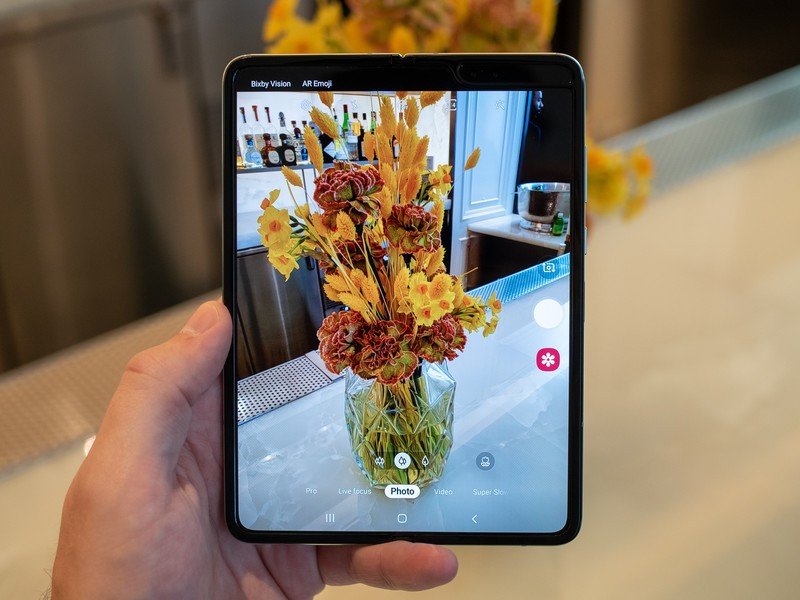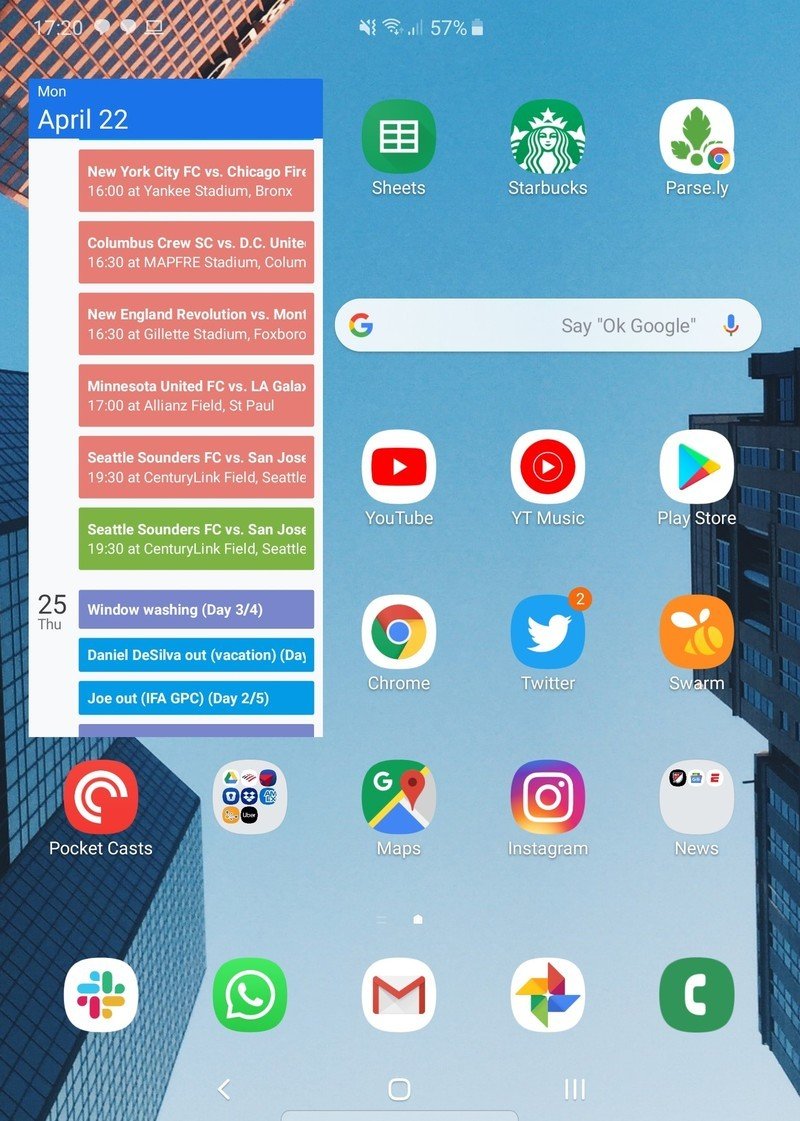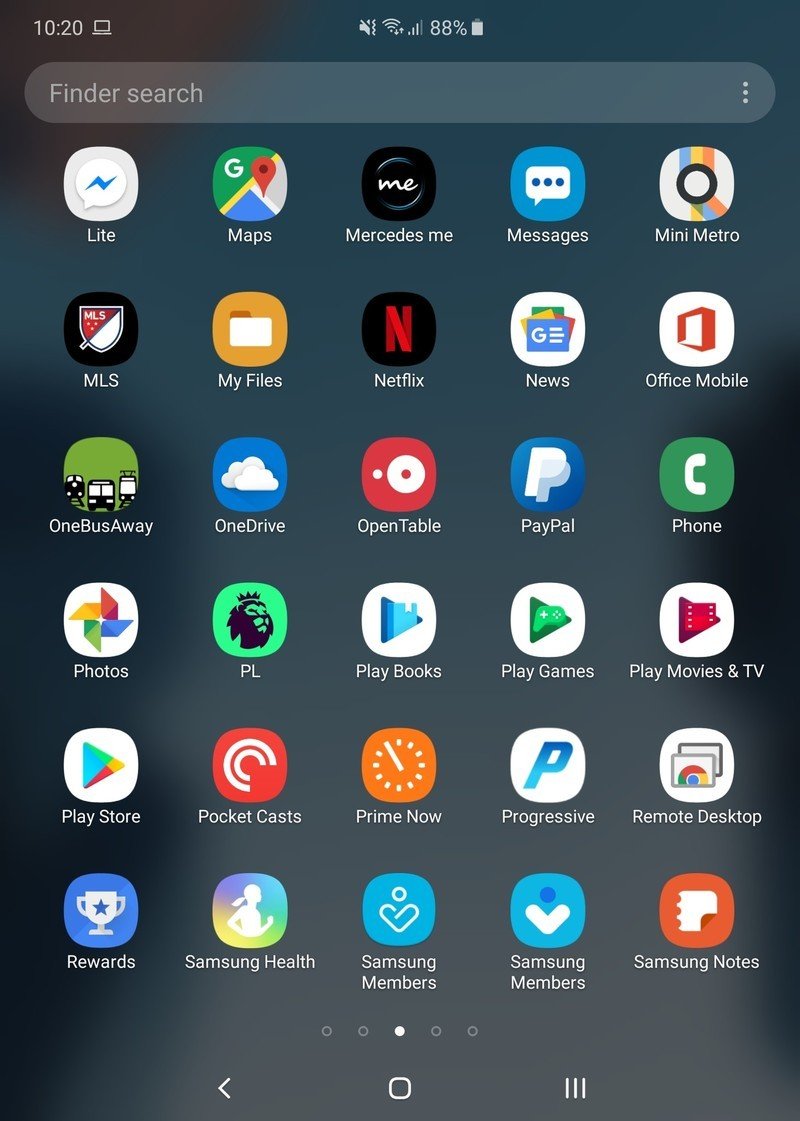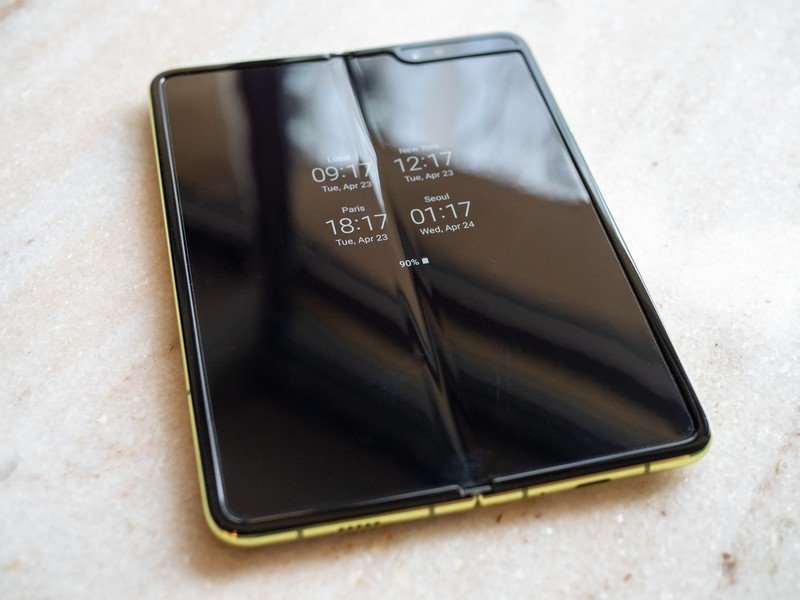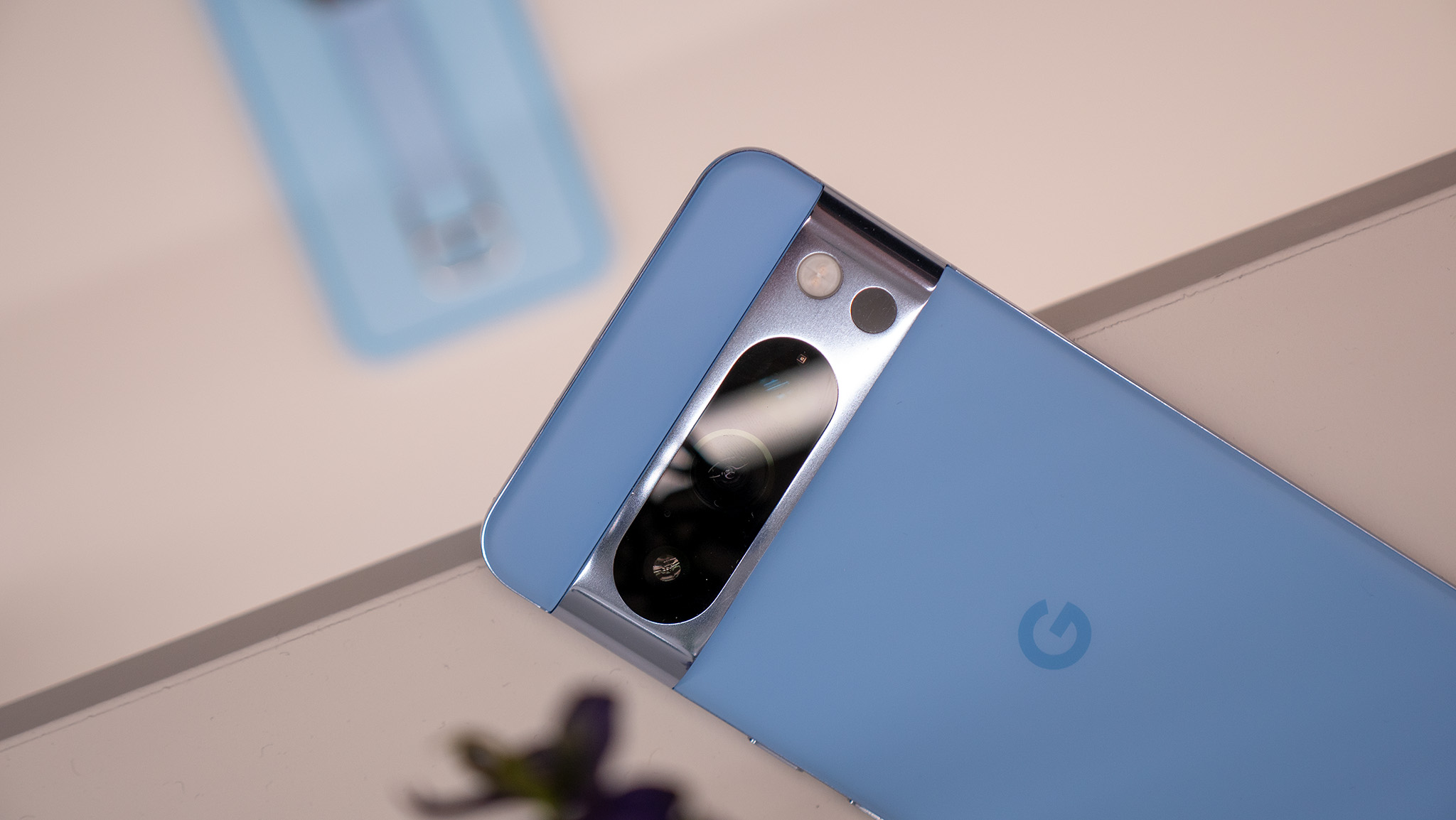We've been waiting for this day for years. Once an item of science fiction, we finally have our first taste of real, honest-to-goodness, foldable smartphones. With no separate screens or weird caveats; the Samsung Galaxy Fold has a single display that folds in half, and continues to work after hundreds of thousands of repetitions. It's a technical achievement that took Samsung nearly a decade of development, and what we can only assume is a staggering amount of research spending.
Throughout the process of writing this review, I was grappling with the best way to evaluate the Fold. It didn't make sense to follow a typical smartphone review, because this isn't a typical phone. It's a bellwether for where this entirely new era of foldable phones is headed, not a product any real number of people are expected to buy. Samsung made that process a bit easier in the later stages, because exactly a week after I picked up my Galaxy Fold the company decided to indefinitely postpone the global launch after assessing concerns over screen fragility from early reviewers' evaluations.
Samsung's plans for launching the Galaxy Fold at a later date are not yet known, and we don't know what will be changed in the devices that eventually ship to consumers compared to what I currently have in my hands. But what we do know is that this phone, as tested for the week, is not identical to what people eventually get for their $1980 in several weeks' time. The focus of this review, then, is on what the Galaxy Fold represents for the foldable market and the potential of what the Fold represents. A proper evaluation of the final version of the Galaxy Fold, as made available to consumers, will have to wait for a later date.
The good
- Massive screen for content viewing
- Incredible spec sheet
- Head-turning design
- Futuristic, unique technology
The bad
- Incredibly high price
- Thick, heavy and cumbersome
- Real screen fragility concerns
- Ho-hum battery life
Future is bright
Samsung Galaxy Fold The potential
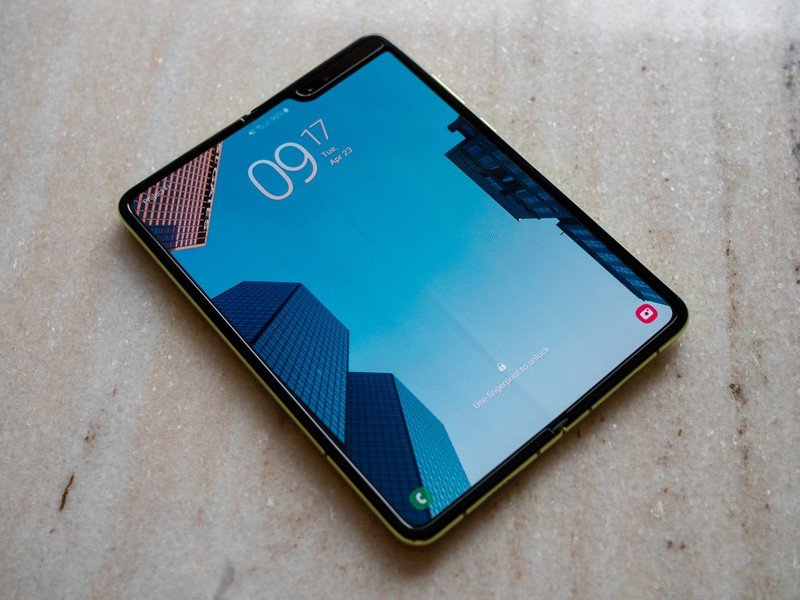
The most exciting part about holding the Galaxy Fold in your hands and casually flipping it open to reveal that big 7.3-inch tablet-like display is that it just feels like the future. You don't know just how distant of a future it is, but you never forget that you're holding a phone that's special. You know that the Galaxy Fold is different from every phone you've been using for the past decade, and different from every phone the people walking on the street and sitting in the cafe next to you are using.
Get the latest news from Android Central, your trusted companion in the world of Android
In over a week of using the Galaxy Fold, I have yet to open it up in a public place without picking up less-than-subtle stares from people trying to figure out just what the heck that thing is. I like to think that people notice when I'm using the latest Google Pixel or Galaxy S phone immediately at (or before) launch, but in reality nobody ever notices — but they sure as hell notice the Fold. Easter afternoon with my family turned into several show-and-tell sessions explaining what the Fold is, how it works, and that yes it's an actual product that you'll (eventually) be able to buy. I've fielded questions from strangers, and participated in heated discussions as to its merits online.
Interest in the Fold, from average people and myself alike, goes beyond just the initial wow-factor of folding the phone in half and back out again. The potential of this type of device is clear as day. Smartphone screens have steadily increased in size as our appetite for room to work and play grows, but we've (just about) reached the limit of how big a standard rectangular smartphone can reasonably get. They don't fit in our pockets, or our hands, and yet we still desire larger and larger screens. The Galaxy Fold addresses this problem in the simplest way of letting you have your cake and eat it too: have the big screen when you want or need it, and have a smaller device that better fits in one hand or your pocket when you don't.
It doesn't take long for the main display size to make complete sense.
The main display is a size that doesn't take long to make complete sense. The 7.3-inch display at a (roughly) 4:3 aspect ratio immediately feels natural like small tablets and e-readers have in the past, both in the way that it physically works in your hands and how the software formats on that shape of screen. Because it's relatively close to a square shape, I found I used the Fold in portrait a vast majority of the time, which just feels natural anyway with the book-like hinge. Holding the phone with one hand in landscape felt decidedly more awkward with my fingers being split cross two sides of the hinge point.
The Fold is heavy, but not too heavy to casually hold in one hand while scrolling through an app feed or article. And with two hands wrapped around it, you feel focused and in control of everything happening on the screen with both thumbs at the ready. Hop into two (or even three) apps at a time with the split-screen multitasking view, and you can really get a lot accomplished. The ergonomic split keyboard is actually very easy to type on, and the expanded home screen lets you make liberal use of widgets but also fewer app folders.
The software experience is fine but I know it will get dramatically better with time.
I also understand that the software experience can, and will, evolve to make even better use of the screen space. Android apps don't always play nice with this screen size or aspect ratio, as we've seen for years with tablets, but that isn't a knock on the Fold itself in any way. Samsung and Google are working hard to push developers to think about the future of foldable devices with larger — and variable — screen sizes, and the hope is that the Fold can be a starting point for making sure apps are ready to go when these devices enter the mainstream. Much of Samsung's interface on the Fold is lifted whole cloth from the Galaxy S10 as well, which I also expect to change as the Fold becomes a bigger focus for the company. There is so much more you can do with this screen size and shape when you stop thinking about it as a larger version of today's smartphones and make principled design decisions to address this form factor in particular.
But what really lets this big folding screen design work is Samsung's decision to add the "cover" screen on the outside of the Fold. Along with having the added benefit of letting the main screen fold inward to protect it in your pocket, the cover screen is critical for one-handed usability. Even though it's easy enough to browse and read with one hand on the opened Fold, you can't do much else without the addition of the second hand. The cover screen saves you from having to open up the Fold for simple tasks — it's kind of like a lock screen, but more capable.
The cover screen completely makes the experience — without it, the Fold would be frustrating to use every day.
Being a fully-featured view of the phone you can use apps and anything else like you would on any "normal" phone, but because of its size you typically just use it to quickly manage notifications, hit a quick message or two, manage media playback and then flip open the screen as soon as you have a second hand free to get more done with the big screen. It frees you from being worried about the struggles of potentially managing the unfolded Fold all the time, which ends up making your time when you do have it unfolded even more productive and less cumbersome.
Seamlessly switching back and forth between using the cover screen and main screen quickly becomes second nature, even though it seems like it would be confusing at first. When executed properly, this dual screen paradigm in many ways makes more sense than the single "outie" folding screen we've seen demonstrated on other devices.
Mired with compromise
Samsung Galaxy Fold The practicality

For all of the potential there is to see in the Galaxy Fold, it was always bound to be tempered by the reality of the hardware compromises that needed to be made just to support this new foldable display. The Fold is a technological marvel, but it took only a few days of use to realize that it isn't a finished mass-market device on the same level as the Galaxy S10 or any of its mainstream competitors — that's just the reality of the Fold representing the first generation.

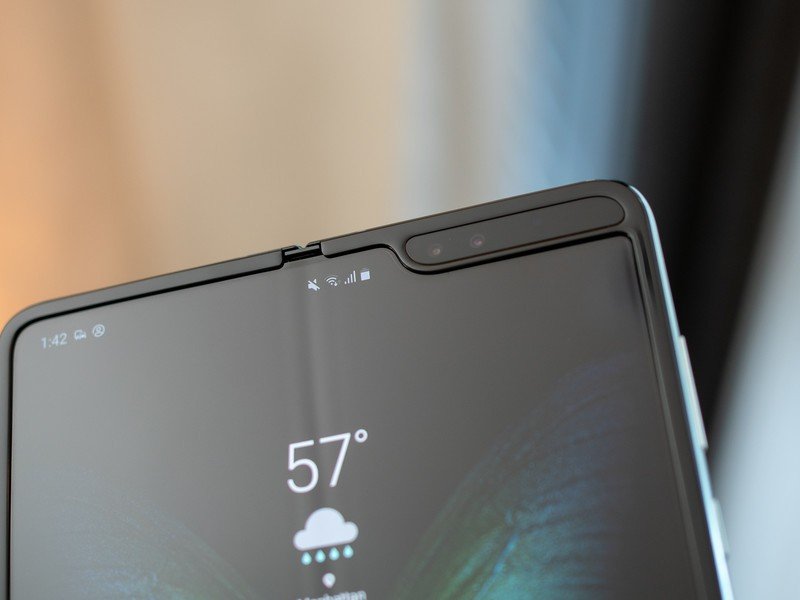
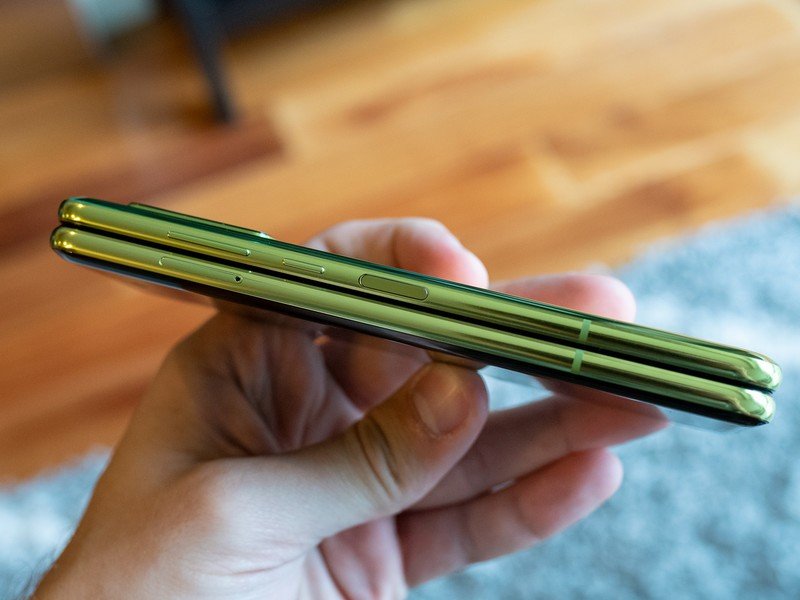

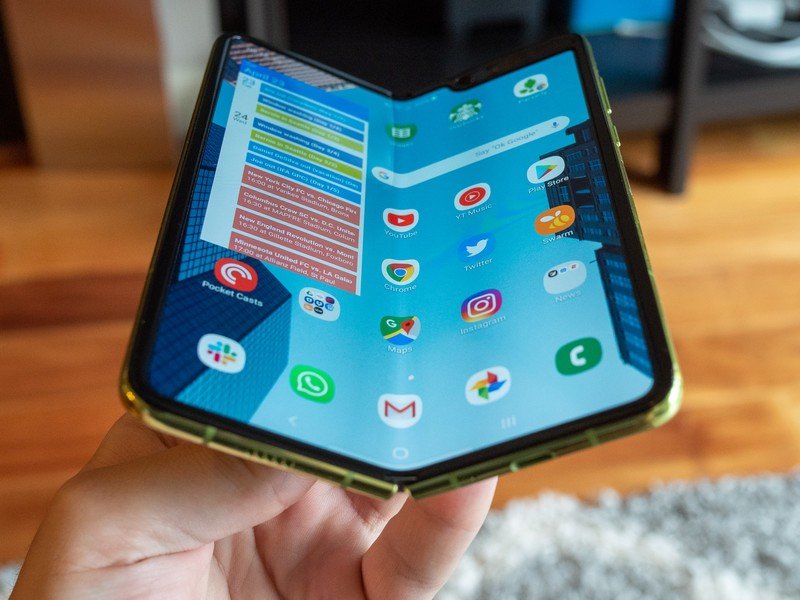
The size and clunkiness of the hardware detracts from what's a truly unique and futuristic form factor.
This weekend my 6-year-old niece made an astute remark when seeing me using the Galaxy Fold. After asking the very pertinent question of, "is that a phone?" she quickly followed up with "well, it looks like two phones stuck together." Indeed it does. The Fold is very thick and very hefty — basically twice the thickness of a Galaxy S10+, and 50% heavier. The thickness is obviously a concern when the Fold is closed, because it makes the cover screen tougher to reach around and manage even though it's quite small. The weight doesn't cause problems most of the time, but is very noticeable in your pocket and when trying to use the Fold while laying down (yes I should put down my phone and go to sleep, but that's a different discussion).
The size of the hardware in general detracts from what would otherwise be highly positive experience with this type of folding form factor. The thickness, weight, considerable bezels on both displays, awkward fingerprint sensor placement, and large display notch all remind you that Samsung has a long way to go in developing this platform. It doesn't cloud the vision of the potential of this type of phone, but it absolutely gets in the way of being able to buy this phone.
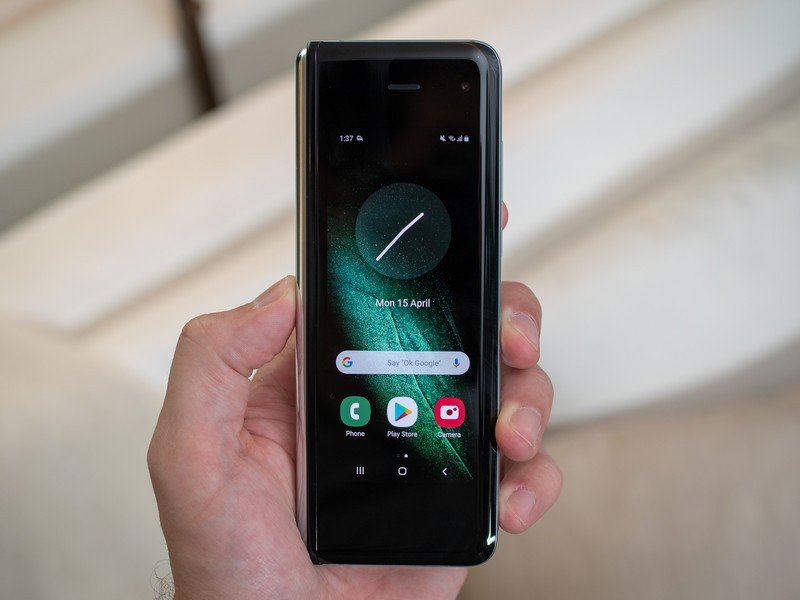
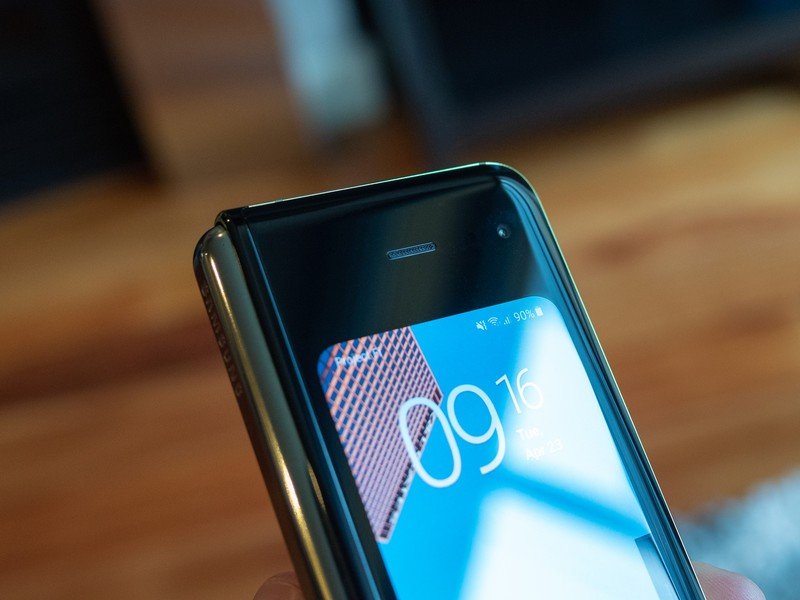
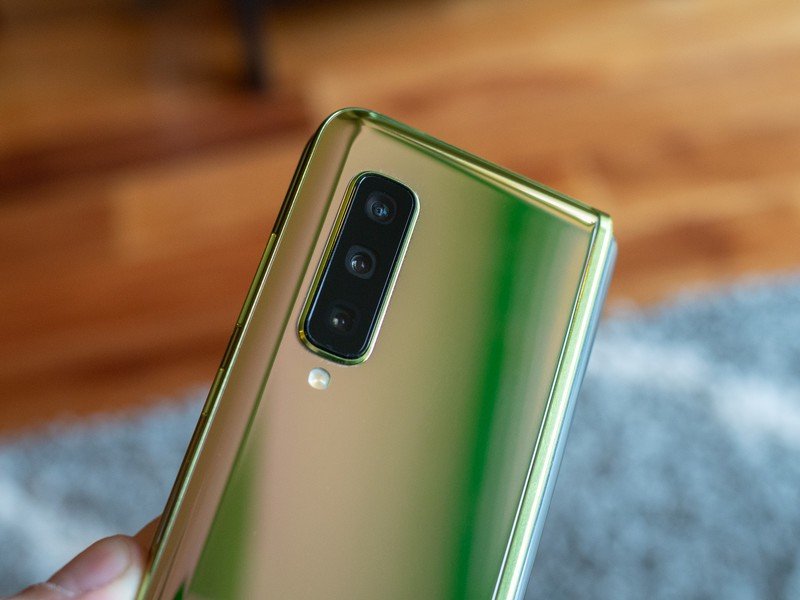
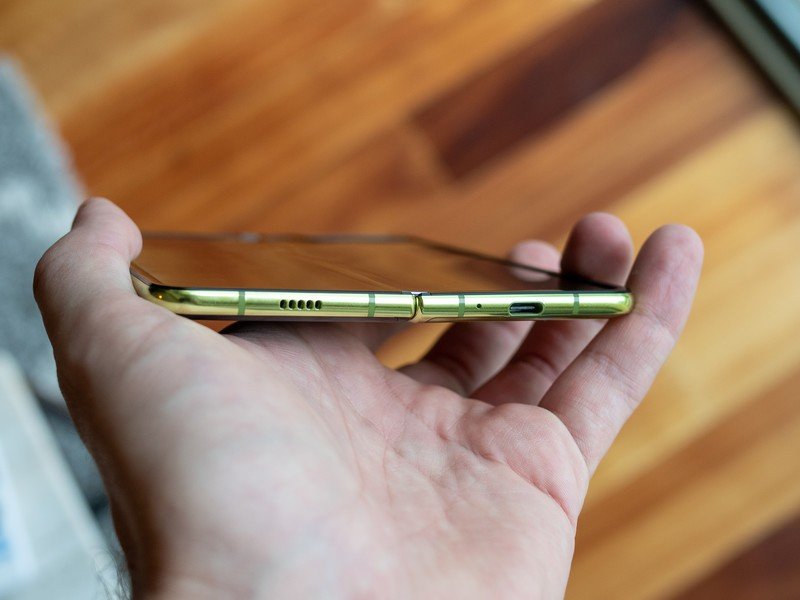
We're just not used to phones that have this many moving parts nowadays.
One interesting side effect of having a phone that folds in half is that the phone ... shifts around and makes noise when you use it. We've gotten so used to phones being entirely solid-state devices with zero moving parts, that it's rather disconcerting to all of a sudden have the sensation that the device you're using moves and creaks and rattles like it's 2005 and you have a sweet QWERTY-packing Windows Mobile phone. Sure sliders are making a mini-comeback and devices like the BlackBerry KEY2 have moving parts, but those examples are few and far between, and none of them have the substantial amount of whole phone movement happening on a fundamental level of the device.
I constantly found it odd to be on a phone call and hear the Fold's hinge creaking subtly as I gripped it in different ways and shifted its position on my ear. Sometimes furious typing sessions would be briefly interrupted by the phone folding inward a tad, causing me to mistype and then flatten the screen back out again. Samsung's hinge mechanism is, by all accounts, an extremely advanced piece of tech — but it still doesn't "lock" the phone tightly when open, and the small amount of slack in the hinge when closed isn't the most reassuring as you grip this heavy (and expensive) phone in one hand.
Samsung deserves props for not cutting back on the specs of the Fold, which directly follow the Galaxy S10+. That includes the camera array, which feels particularly overkill with two different selfie camera setups in addition to the standard three rear cameras. It probably could have dropped down the RAM, storage or battery capacity, or removed some of the extra cameras and stereo speakers, and made the Fold a bit thinner and lighter to alleviate some of these clear ergonomic issues. But Samsung stuck with a focus on providing the best possible performance and features for this $1980 phone, which is probably for the best. Performance has been excellent, even when heavily multitasking, and battery life has averaged out to be just a little worse than the Galaxy S10+ — not bad considering the extra screen real estate the Fold has to power.
That being said, the Fold doesn't have all of the features of the Galaxy S10+. It notably loses its headphone jack, a Samsung staple, and the complicated hardware design means it doesn't have any IP water- or dust-resistance rating to speak of. And of course because the main screen is covered with a plastic protective layer rather than glass, the screen doesn't look quite as brilliant as it does on Samsung's last few years of phones.
Of course, it wouldn't be a high-profile phone launch without some high-profile controversy to match. As we were all enamored by the Galaxy Fold's technical feats, several early reports of failing screens quickly threw a wrench into our excitement. None of the compromises or issues I enumerate here have anything to do with these screen fragility concerns, but when Samsung's response to these screen issues is to delay the entire phone launch you need to take it into consideration. Those discussions will have to pick back up when we see Samsung's official launch hardware later in the year, though.
Even outside of the screen's potential durability and longevity, the Fold has a level of compromise and number of fundamental usability issues that put it well into the "hard to recommend anyone buy this phone" column. Smartphones are so good nowadays, with every company standardizing on efficient processes and very mature technology, that facing the reality of giving up modern conveniences in order to get a unique feature (like a folding screen) isn't worth it.
What can you say?
Samsung Galaxy Fold Bottom line, for now
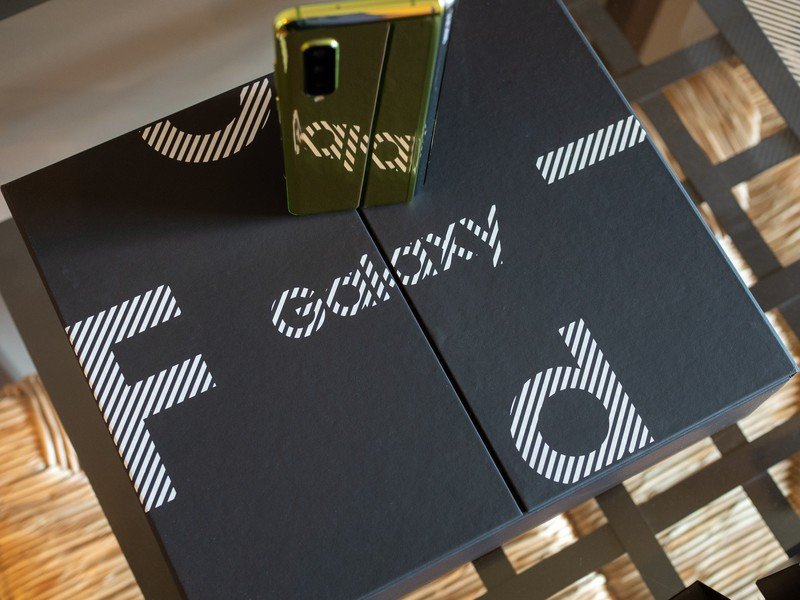
It's extremely difficult to simply "review" the Galaxy Fold. To put it through the typical process of reviewing it as a mainstream product as we've done with hundreds of phones over the past decade would be a disservice to everything the Fold brings to the table and represents as the start of a shift to an entirely new smartphone form factor.
The Galaxy Fold showed me that foldable phones can, and will, be the way of the future.
It's impossible to use the Fold and not get excited about what the future holds for smartphones. Whether it's in this exact style, something more akin to Huawei's Mate X, or something different entirely is still up in the air. But it's clear that foldables will continue to have a place in the smartphone world. We want more screen space and capabilities while retaining some semblence of being able to carry the phone around comfortably — the Galaxy Fold shows us it's not only possible, it can be really great.
3 out of 5
But for as much as I've loved using an entirely new type of device, and enjoyed exploring the novelty and potential of a phone that can fold in half and change its size and shape at a moment's notice, after over a week of using the Galaxy Fold I simply found myself yearning for the comfort of a regular phone. I just wanted to use my Galaxy S10+ again. And that has nothing to do with the potential and promise of foldables or even the Galaxy Fold itself in many situations. It's purely based on all of the substantial compromises that this first-gen product requires you to contend with in order to get that foldable screen. The ceiling for what foldables can be is incredibly high, but the state of current technology to support those displays also makes the floor incredibly low right now.
As I send my Galaxy Fold back to Samsung and patiently wait for a replacement when the phone's retail launch comes back around, I will happily go back to the Galaxy S10+ and the comfort of a phone that's downright excellent without massive usability compromises. But that won't cause me to be complacent and forget that the future is foldable — the Galaxy Fold has made that clear.

Andrew was an Executive Editor, U.S. at Android Central between 2012 and 2020.

